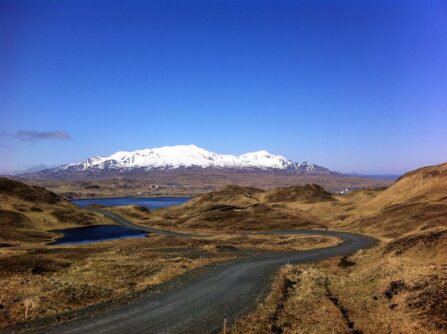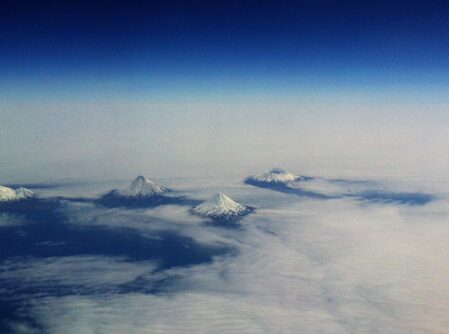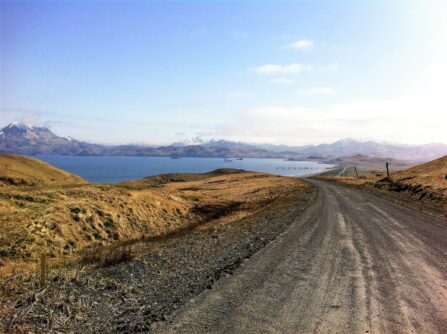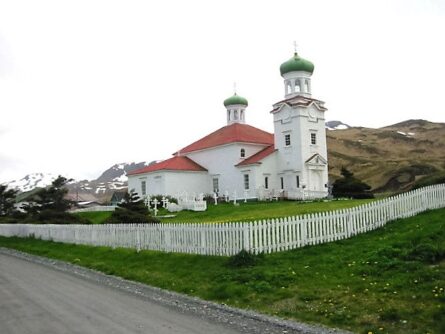Adak: A Fascinating and Distant Aleutian Island
Adak is a most interesting place
The Aleutian Islands are distant, remote and fascinating; Adak, being the island farthest west that is actually inhabited, is of particular interest to map-gazers and travellers.

Frequent Flyer miles are addictive, and often propel collectors to undergo some most curious journeys. “Aspirational Travel” is the phrase used within the Points Community to describe these behaviours, using points to fly in Business or First Class or journeying to some destinations that would otherwise be out of reach.
In this spirit, a few years back, I used some Alaska Airlines miles to travel to Adak, the most westerly of the Aleutian Islands that is inhabited by civilians.
It is a remarkable place.
Flying for nearly three hours west from Anchorage, tracking along the wild Aleutian Island chain and overflying striking volcanic peaks, we arrived at the airport in Adak. With a current population of only about 200 souls, it seemed odd that Alaska Airlines operated a huge Boeing 737 on this sparse route. The first of many curiosities was that the island, lying as it does at 176˚ W, is far to the west of Hawaii, at 176˚ W.

The Second Word War saw intense action in The Aleutian Campaign
Accommodation on the island is in rental houses. Until the 1990s Adak was a significant, if remote, US military base. The role that the island chain played in the Second World War was significant, and subsequently as a vital communications point. Then, seemingly over one short week, the army left, leaving a community designed for 6,000 people nearly abandoned.
During the Second Word War, The Aleutian Campaign saw over 30,000 forces billeted on the islands. The threat from Japanese aircraft seeking to use the island chain as a “carrier” to base attacks on the US Mainland was very real, and the Northwest Pacific, a difficult place to be in the best of times, saw significant and grueling action.
After the war, several bases remained, including the distant station at Attu remained to collect weather data, listen to Chinese and Russian communications and generally keep a strong presence in this distant, but vital part of the world.
Today, the housing, looking exactly like an abandoned suburb from California, is almost all vacant. The wind rips siding from the buildings and there is a general air of demise. Street signs rust, playgrounds corrode in the violent weather, and slowly but surely, nature is reclaiming this intriguing outpost.

Rental trucks are the way to explore the island. The landscape is extraordinary: brutal, lonely, unforgiving and isolated, Adak offers some of the most beautifully haunting scenery I have ever seen. Exploring the old military base’s facilities was strange; there is still water in the swimming pool, and the bowling alley looks as if it only needs a dusting and new lights to spring back into action.

Driving around, though, was wonderful. Remote places don’t seem remote when you are actually there, but the feeling of distance and isolation in Adak was very real. The stunning landscapes, the constant reminders of previous habitation and its abandonment were ever-present. The question of why 200 folks chose to live here, including a Salvadorean family who ran a small taco stand, dominated our thoughts. Quietly, we were pleased to have plane tickets out in a few days.
And odd things happened. In the middle of the night, a small business jet landed, two men disembarked and were swallowed into the night. The jet left. There are fields of radar antenna that the relentless wind sometimes knocks over. Within a day they are repaired, but by whom? The locals that we spoke with were perplexed and had no idea what might (or might not) really be going on on Adak.
Isolated islands are always shrouded in mystery. The Aleutian Islands particularly so.

It is, perhaps, their long history of occupation, first by the Aleut peoples since ancient times. Then colonised by Russians until the state was purchased by the USA in 1867, although to this day, the signs of Russian Orthodoxy remain in both local names and the religious buildings that dot the islands. The graves carry names redolent of the first Russian settlers, and far to the East, in Unalaska near Dutch Harbour, the Orthodox church still offers regular services.

Travelling to these islands is a real privilege. They connect to the distant past of the Unangan peoples, perhaps the original tribes to cross the sea ice from Asia to North America, and thread the occupations of Russian and now American settlers into real time. The islands are geographically stunning, and the few people that still call Adak their home are quite remarkable and resilient. One has to be to choose to live in such an inhospitable and inaccessible place.
I was quite happy that our flight was on time; I loved being on Adak, would willingly return for a few days, but completely overwhelmed by the rugged isolation and loneliness of these remarkable islands.
The Aleutian Islands are quite fascinating, and for myself, a fabulous use of frequent flyer points.

This article was first published by Respect News from Cold Lake, Alberta.
